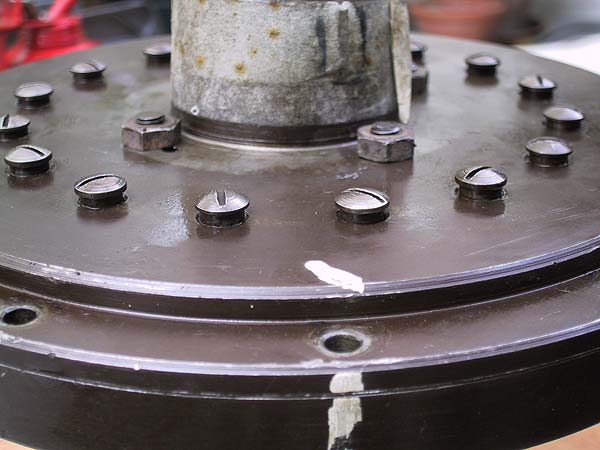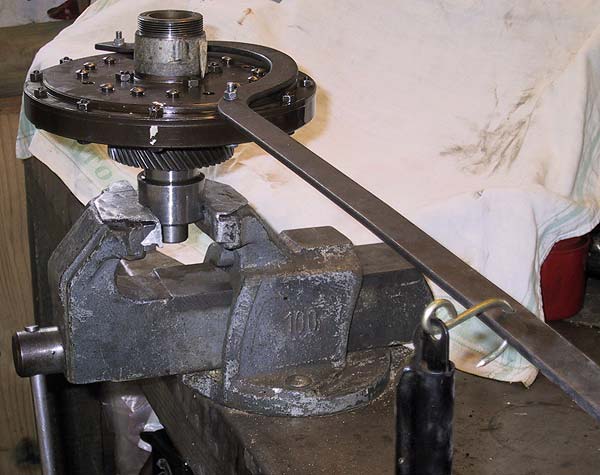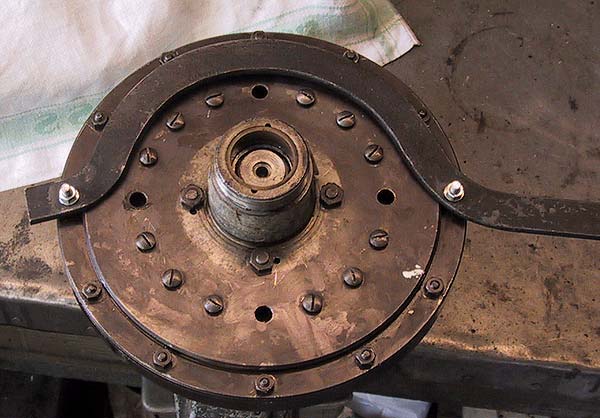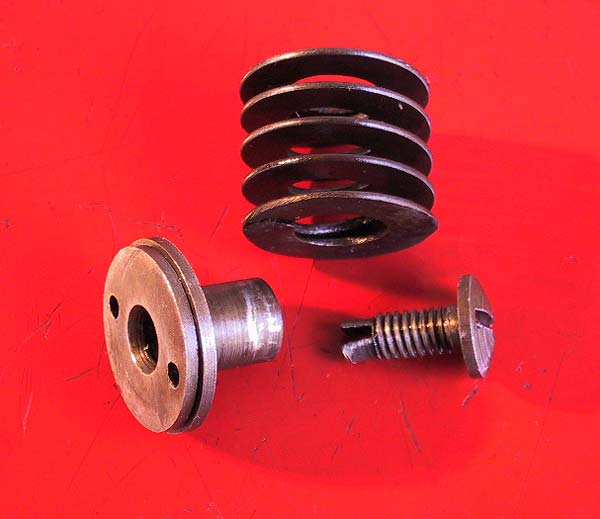 |
When the slipper drive is bolted together the springs are compressed and push the mounting screws out of their sockets. There should be enough clearance of movement such that the screw heads can still be levered upwards. Without that clearance the damper would not work. |
 |
During assembly the cotton washers should be well soaked in oil. The flywheel should be assembled on the mandrel without the radial springs. Prior to measuring the break-away poundage it is important to work the flywheel through about 100 cycles of full movement to ensure that all pieces ore fully bedded. The initial reading was 25 lbs; somewhat higher than the target of 12-14 lbs. The flywheel was tested, variously, with the cotton washers, the washers reversed and with the previous Tufnel disks - all to no great advantage. |
 |
After removing two opposing springs the breakaway poundage reduced to 18 lbs. Two further springs, displaced at 90 degrees to the first pair, were removed an gave a reading of 13 lbs for both breakaway and full range movement - most gratifying. No more than 4 springs should be removed in this exercise. Failure to reach the correct breaking force will require the substitution for a different set of washers and repeating the whole time consuming exercise.
|
 |
The components for attaching the springs to the diaphragm. The screw is tightened fully inside the retainer and then its tangs are splayed to prevent it undoing. Removal is a simple matter of holding the retainer with circlip pliers and undoing the screw. |